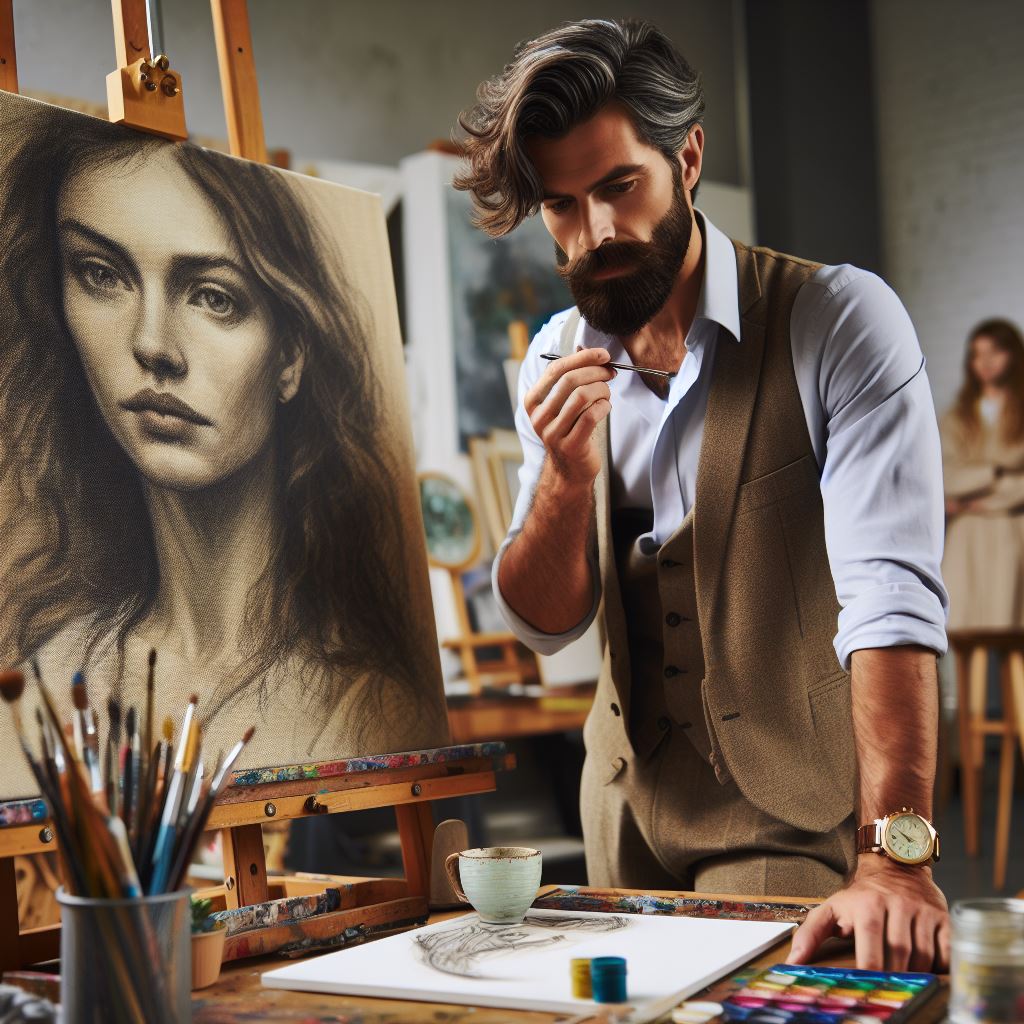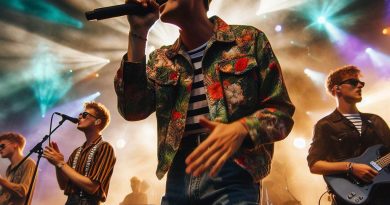Artists’ Rights and Laws in the UK Explained
Last Updated on January 27, 2024
Introduction
Within the rich tapestry of creative expression, the importance of artists’ rights and laws in the United Kingdom emerges as a cornerstone.
This blog section serves as a gateway to the nuanced world where artistic endeavors intersect with legal frameworks.
The importance of artists’ rights and laws
Artists’ rights encompass a spectrum of legal protections, ensuring the safeguarding of their creations.
Understanding UK rights and laws goes beyond legality; it shapes how artists steer their careers, safeguard intellectual property, and ensure fair compensation for contributions.
The significance of understanding these rights and laws in the UK
In an era where digital platforms and global connectivity redefine the landscape, the understanding of these regulations becomes paramount.
This section initiates a journey into the intricacies of UK artists’ rights, shedding light on their pivotal role in fostering a thriving and equitable artistic community.
Join us as we unravel the layers of legalities that underpin the creative world, empowering artists to navigate and flourish within a framework that acknowledges and protects their contributions.
Artists’ Rights in the UK
Copyright law and its relevance to artists
Within the intricate tapestry of Artists’ Rights in the UK, the linchpin is undoubtedly copyright law.
This legal backbone serves as a guardian, ensuring that the intellectual property of artists remains under their control. In essence, copyright dictates how their creations are utilized, distributed, and protected.
Moral rights and their protection
A critical facet of these rights lies in the realm of moral rights.
Artists here have the right to claim attribution for their work and can object to modifications compromising artistic integrity or reputation.
Moral rights serve as a protective shield, preserving the authenticity and vision of the artist.
Performers’ rights and their impact on artists
Venturing further into this legal landscape, one encounters the realm of performers’ rights.
These rights extend a protective umbrella over those individuals bringing artistic creations to life.
Performers’ rights grant them control over the recordings of their live performances, recognizing the intrinsic connection between creators and the art they breathe life into.
Contractual agreements in safeguarding artists’ rights
Yet, within this multifaceted framework, the role of contractual agreements cannot be overstated.
These agreements act as a detailed roadmap, defining the terms under which artists share their work with the world.
They become instrumental in ensuring fair compensation, delineating the scope of usage, and safeguarding the broader spectrum of artists’ rights.
To successfully navigate Artists’ Rights in the UK, one must grasp copyright law, moral rights, performers’ rights, and strategic contractual implementation.
Empowering artists with this knowledge cultivates a creative landscape that vigorously protects their rights, enabling unabated flourishing of expression.
Read: Balancing Gigs & Life: UK Musicians’ Tips
Laws Protecting Artists in the UK
Explanation of the Copyright, Designs and Patents Act 1988
- The Copyright, Designs and Patents Act 1988 is a crucial legislation protecting artists in the UK.
- It grants exclusive rights to artists over their original works, such as paintings, sculptures, photographs, and literature.
- The Act prohibits others from copying, distributing, or publicly displaying the work without the artist’s permission.
- Artists have the right to reproduce, publish, and communicate their work to the public.
- The Act also covers the protection of artists’ moral rights, which include the right to be identified as the author and to object to derogatory treatment of their work.
- Intellectual property protection is essential for artists to maintain control over their creations and prevent unauthorized use or reproduction.
The protection of intellectual property
- Intellectual property refers to intangible creations of the mind, such as inventions, literary and artistic works, and unique designs.
- Artists’ intellectual property rights are protected through copyright, trademarks, and patents.
- Copyright grants artists exclusive rights to their original works, while trademarks protect distinctive signs used to identify their goods or services.
- Patents safeguard inventions and grant artists exclusive rights to their innovative ideas or processes.
- Intellectual property protection provides artists with the opportunity to commercialize their work and benefit economically.
- It also encourages artists to continue creating and fosters innovation in the creative industries.
Mention of the Artist’s Resale Right Regulations 2006
- The Artist’s Resale Right Regulations 2006 entitles visual artists to receive a royalty when their works are resold.
- It applies to original artworks sold through art market professionals or auctions above a certain price threshold.
- The resale royalty is calculated based on a percentage of the resale price and applies for sales within the artist’s lifetime and up to seventy years after their death.
- This right ensures that artists can benefit from the increasing value of their work in the secondary market and provides ongoing income.
- The royalties can support artists financially and contribute to the sustainability of their creative careers.
Overview of laws regarding public art and street art
- Public art includes any artwork displayed in public spaces, such as parks, streets, or government buildings.
- Local authorities and planning legislation often regulate public art to ensure its quality and suitability.
- Street art, on the other hand, refers to unauthorized art created in public spaces, often using illegal methods.
- While street art may be seen as a form of expression, it is subject to legal implications such as vandalism or defacement charges.
- Some public art initiatives involve collaboration between artists, community organizations, and local authorities to enhance public spaces and engage with the community.
- These initiatives often comply with guidelines addressing issues such as cultural diversity, environmental impact, and accessibility.
Lastly, the UK has various laws in place to protect artists’ rights and creations.
The Copyright, Designs, and Patents Act of 1988, along with intellectual property protection.
The Artist’s Resale Right Regulations of 2006, and regulations addressing public and street art, collectively safeguard artists’ interests and promote artistic expression.
These laws promote a thriving artistic community and contribute to the cultural landscape of the UK.
Read: Earning as a Musician in the UK Today

Challenges Faced by Artists in Protecting Their Rights
In the UK, artists often encounter various challenges when it comes to protecting their rights.
One major challenge is the prevalence of copyright infringement, which continues to pose a significant threat in the artistic community.
Proving ownership and originality is another uphill battle that artists face.
With the ease of digital manipulation and the widespread sharing of creative content, it becomes increasingly difficult to establish rightful ownership and protect original works.
Although copyright law exists to safeguard artists’ rights, there are limitations and exceptions to consider.
These limitations can impede artists’ ability to fully exercise control over their creations, leaving them vulnerable to unauthorized use or reproduction.
Enforcing artists’ rights is yet another obstacle, especially for emerging artists who may lack the resources and support enjoyed by more established creators.
Without adequate legal representation and financial means, it becomes challenging to combat copyright infringement effectively.
The Prevalence of Copyright Infringement
Copyright infringement remains a persistent issue for artists in the UK.
Despite legal provisions in place, unauthorized use and reproduction of creative works continue to occur, diminishing artists’ rights and potential income.
With the rise of digital technologies and the internet, infringing on copyrighted material has become easier than ever before.
Artists struggle to monitor and deter unauthorized distribution, leading to lost revenue and a devaluation of their artistic endeavors.
The Difficulty in Proving Ownership and Originality
Establishing ownership and originality can be a complex process for artists due to the nature of creative expression.
Plagiarism and the appropriation of artistic ideas further complicate matters.
In an increasingly interconnected world, where inspiration and artistic influence can come from various sources, proving originality becomes a daunting task.
Artists must gather evidence and protect their work to prove its uniqueness and establish their rights effectively.
Limitations and Exceptions to Copyright Law
Artists should also be mindful of the limitations and exceptions within copyright law that may impact their rights.
Fair use exceptions, for instance, allow limited use of copyrighted material for purposes such as criticism, parody, or education.
While these exceptions serve valuable purposes in society, they can undermine artists’ control over their work.
It is important for artists to understand these exceptions and navigate them cautiously to ensure their rights are adequately protected.
Enforcing Artists’ Rights: A Challenge for Emerging Artists
Emerging artists often face significant challenges in enforcing their rights due to limited resources, financial constraints, and lack of industry influence.
Securing legal representation can be costly, making it difficult to pursue copyright infringement cases effectively.
Add to this the time-consuming process involved in legal proceedings, and artists may find it discouraging to protect their rights vigorously.
This imbalance leaves many emerging artists vulnerable to exploitation and unauthorized use.
The vast amount of creative content poses a challenge for artists to actively monitor and address copyright infringement without robust support.
Despite the rights granted by copyright law in the UK, artists face numerous challenges in protecting their creative works.
Copyright infringement, difficulties in proving ownership and originality, limitations to copyright law, and the challenges of enforcement pose significant obstacles.
It is crucial for artists to be aware of these challenges and actively seek avenues to secure their rights.
Collaboration, education, and advocacy can play essential roles in empowering artists and ensuring their work is respected and protected.
Read: The UK Musician’s Guide to Copyright Laws
Gain More Insights: Balancing Art and Business in the UK Scene
Supporting Organizations for Artists’ Rights in the UK
Artists’ rights and laws play a crucial role in the protection and promotion of artistic creation in the UK.
To ensure the fair treatment and support of artists, various organizations have been established to advocate for their rights and provide valuable resources and services.
In this section, we will delve into the key organizations supporting artists’ rights in the UK.
Introduction of Key Organizations Advocating for Artists’ Rights
Multiple organizations work tirelessly to safeguard artists’ rights in the UK. These organizations aim to create a fair and sustainable environment for artists to thrive.
They provide legal advice, lobbying efforts, and collective representation, among other essential services.
Overview of the Artists’ Collecting Society and Its Role
The Artists’ Collecting Society (ACS) is a leading organization in the UK that represents the interests of visual artists.
It focuses on the collection and distribution of royalties for the use of artists’ works. The ACS ensures that artists receive fair compensation for the exploitation of their creations.
The ACS actively licenses the reproduction and public display of artworks, granting permissions and collecting royalties on behalf of its members.
These royalties play a crucial role in supporting artists’ livelihoods and facilitating further artistic endeavors.
Mention of the Design and Artists Copyright Society
The Design and Artists Copyright Society (DACS) is another prominent organization safeguarding the interests and rights of visual artists, photographers, and designers.
DACS manages the licensing of artistic works and ensures that artists are appropriately remunerated for the use of their intellectual property.
DACS also provides a range of valuable services, including legal advice, copyright registration, and image tracking.
It actively campaigns for fair remuneration and promotes awareness of artists’ rights in the creative industry.
Explanation of the Artists’ Bill of Rights and Its Objectives
The Artists’ Bill of Rights (ABOR) is a fundamental document that outlines the rights and protections deserved by artists.
It aims to address the imbalance of power between artists and those who exploit their creations, ensuring fair treatment and respect for their work.
The ABOR actively champions fundamental rights: ensuring fair payment, safeguarding moral rights, controlling exhibition and reproduction, preventing censorship, and demanding proper attribution.
It seeks to empower artists and foster a supportive environment for creative expression.
Through the ABOR, artists can recognize and assert their rights, while organizations, governments, and society as a whole are encouraged to respect and uphold these rights.
It represents a significant step forward in the recognition and protection of artists’ contributions and interests.
Most importantly, artists’ rights in the UK are safeguarded and promoted through the efforts of various supporting organizations.
The Artists’ Collecting Society and the Design and Artists Copyright Society play crucial roles in licensing and ensuring fair compensation for artists.
Meanwhile, the Artists’ Bill of Rights aims to secure fundamental rights and empower artists in their creative pursuits.
Together, these organizations and initiatives contribute to a more equitable and thriving artistic landscape in the UK.
Read: From Garage to Gigs: UK Bands’ Journeys
Learn More: Breaking Into the UK Art Market: Tips & Tricks
Conclusion
In closing, protecting and promoting creativity in the UK hinges on artists actively understanding their rights and educating themselves about governing laws.
It is essential for artists to understand the importance of copyright protection, intellectual property rights, and contracts to safeguard their artistic creations and ensure fair compensation.
Fortunately, there are various resources and organizations available to support artists in navigating the complexities of the legal landscape.
These include industry-specific associations, legal aid clinics, and online platforms that provide legal guidance and information.
Looking ahead, the future of artists’ rights in the UK holds both challenges and opportunities.
With advancements in technology and digital media, the legal framework surrounding artistic expression may need to evolve to keep pace with changing practices and emerging issues.
Moreover, artists must actively participate in shaping these rights, advocating for their interests, and staying informed about any potential changes in legislation or industry practices.
By doing so, artists can protect their creations, secure fair compensation, and contribute to a thriving creative ecosystem in the UK.


